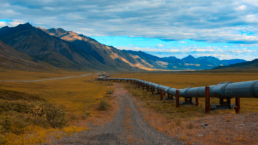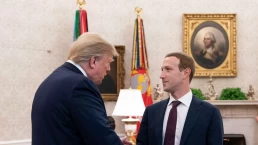With new drilling permits proposed in the Gulf of Mexico and Alaska, a Public Citizen study finds that low royalties let fossil fuel producers maximize earnings.
By Akela Lacy, The Intercept
“No more drilling on federal lands,” said former vice president, Delaware senator, and presidential candidate Joe Biden in March 2020. Debating his then-competitor Bernie Sanders on CNN, Biden urged: “No more drilling, including offshore, no ability for the oil industry to continue to drill, period.”

On July 1, President Joe Biden’s administration put out a new draft plan to open up oil and gas drilling leases in the federal waters off the coast of Alaska and in the Gulf of Mexico. Released on the Friday before the Fourth of July holiday weekend, the plan represents a direct reversal not just from Biden’s campaign promises, but also from his earliest policies as president. On his first day in office, Biden issued a moratorium on such leases, barring the Department of Interior from issuing new permits on federal lands. (The moratorium did nothing to stop drilling under existing permits — which many major fossil companies had preemptively stockpiled.) In April, the administration announced that it would resume selling new permits, and under the draft plan released Friday, the Gulf of Mexico and Alaska coast would be among the approved sites.
The April announcement pointed to “a first-ever increase” in the royalty rate for new competitive leases on public lands — from 12.5 percent to 18.75 percent — meant to soften the blow of the resumption of drilling by packaging it with additional revenue for the federal government and, theoretically, forcing the fossil fuel companies to pay more. In a study released in June, the progressive nonprofit advocacy group Public Citizen recommended that all drilling on federal lands be subject to the higher rate after decades without a royalty increase. The previous June, the group released another report showing that Biden had, by then, already surpassed the monthly average number of drilling permits on public lands issued under former President Donald Trump.
Recent Posts
“Arrest Now, Ask Questions Later”: Why Did L.A. ICE Agents Arrest and Jail U.S. Citizen Andrea Velez?
July 3, 2025
Take Action Now “They didn’t have vests that said ICE or anything. Their cars didn’t have license plates. … Just because of the color of our…
Trump’s Big, Beautiful Bill Is Naked Class War
July 3, 2025
Take Action Now Trump’s “Big, Beautiful Bill” trades tax cuts on millionaires for the dissolution of society.By Hamilton Nolan, In These Times…
Mayor Mamdani’s First Day, A Zero Hour Conversation With Richard Wolff
July 2, 2025
Take Action Now If elected, what would Mayor Mamdani do on his first day in City Hall? How would a democratic socialist govern as a big-city mayor?……
The U.S. Is Funding A Bloodbath At Gaza Aid Centers
July 2, 2025
Take Action Now The admin just gave $30M to GHF, the organization at the center of charges that Israel is weaponizing assistance and shooting at…




